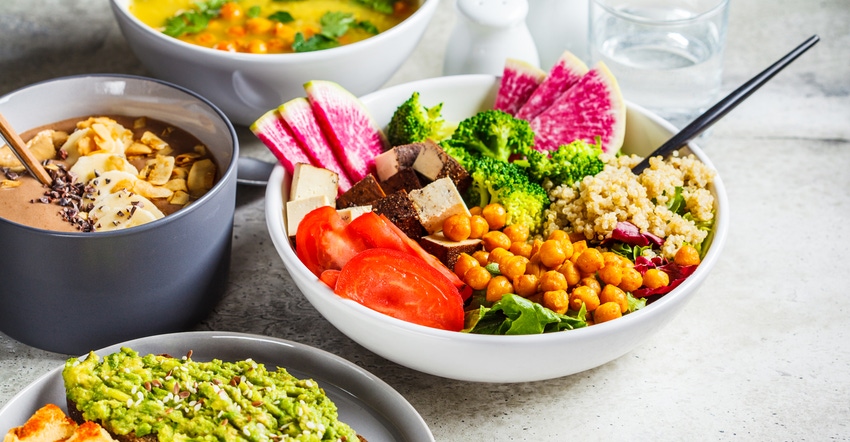April 26, 2022

First and foremost, food must be safe. It also needs to be accessible, nutritious and affordable. But now there’s a new push to make it “cool.”
What constitutes cool? It’s not in the frosty kind of way. It’s a new effort to affect climate change by changing what’s on your plate — basically swapping out meat for more “planet-friendly” options.
The Cool Food Pledge is engaging a growing number of workplaces, hotels, universities, hospitals and restaurants, aiming to slash food-related emissions 25% by 2030 relative to the year 2015. By offering low-carbon menu items that are promoted as such, it’s hoped consumers will change their diets to slash food-related greenhouse gas emissions.
The World Resources Institute (WRI) is behind the Cool Food Pledge and has been recruiting companies and organizations to jump on board for a “small” annual fee. They’ve got quite a list started, including BASF, Bank of America, Hilton, Spectrum Health Medical Center, City of New York, and Harvard University, to name just a few.
It’s not surprising to me that Panera Bread is the first company to receive the Cool Food Meals certification on qualifying menu items.
It’s promoted as a three-pronged process: pledge, plan and promote.
These signatories are asked to set climate targets and track metrics using the Cool Food Calculator with WRI providing related guidance. It’s not asking for everyone to become a vegetarian, but the idea is to eat more sustainably. According to WRI’s research, the average American could cut their diet-related environmental impacts by nearly half just by eating less animal-based foods and more plants.
The GHG emission data uses agricultural supply chain emission factors from a global life cycle meta-analysis by Poore and Nemecek (2018), and carbon opportunity cost emission factors from Searchinger (2018).
How are Cool Foods identified? Using a dish’s ingredients list, WRI calculates its carbon footprint by analyzing the agricultural supply chain and land used to produce the meal. The climate impact is quantified by using a WRI’s Cool Food Calculator, which provides an analysis based upon a peer-reviewed methodology. Each member receives an annual report showing GHG emissions by food type, trends year-over-year and comparisons.
If the carbon footprint meets an established per-meal GHG emissions threshold and nutritional standards, the dish is approved as a Cool Food Meal.
WRI has established a maximum recommended daily carbon footprint for a person’s diet, which is 38% smaller than the average diet in Cool Food’s base year of 2015. According to WRI, this is in line with a level of change needed by 2030 to help avoid the worst effects of climate change.
Pledge members confidentially report food purchase amounts by weight each year. The WRI team asks for data on all animal-based foods, as well as plant proteins.
This is all based on 4,000 research papers, WRI reports, which also says it has consulted 70 industry experts to produce a definitive list of 23 ways to increase sales of plant-rich dishes.
Lastly, the Cool Food Pledge team works with members to create messaging designed to engage diners and employees. The idea is to build a company’s or organization’s reputation as a leader in a growing movement tackling the climate impact of food.
While this effort seems to have some merit, I’m wondering if maybe we could put a halt to the joyrides to space, and the billions spent on such efforts could be redirected to real energy efficiencies. According to NASA, a liftoff of two solid rocket boosters (this is on the space shuttle) consume 11,000 pounds of fuel per second.
That’s 2 million times the rate at which fuel is burned by the average family car. The twin solid rocket boosters generate a combined thrust of 5.3 million pounds, which equals about 40 million hp, or the energy of 14,700 six-axle diesel locomotives or 400,000 subcompact cars.
It appears that if you’re wealthy, you don’t need to worry about climate change because having a few minutes of weightlessness takes priority.
You May Also Like




